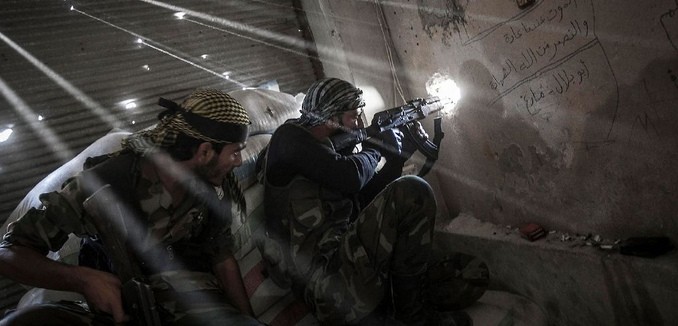The Syrian army, aided by Hezbollah and Iran’s Islamic Revolutionary Guard Corps (IRGC) forces, has for the past several days been conducting an intensive military campaign in southern Syria. These forces are trying to regain control of areas controlled by the Syrian rebels and radical Islamist groups, some of whom are close to the border with Israel.
This is the first time since May 2013 that the Syrian military is carrying out such a large offensive operation in the southern front (Daraa and Quneitra). The Syrian army’s success will allow it to block the both the attempt by the Syrian opposition (both moderate and radical) to reach Assad’s stronghold in the capital Damascus and to gain territory closer to neighboring Lebanon. Success in this offensive could provide a morale boost for Assad’s forces in their overall struggle in Syria, but it is unlikely that success in the south will have direct consequences on the conflict as a whole.
Indeed, the Syrian army, Hezbollah forces, and Iran were able to achieve some significant gains during this campaign so far, re-taking several strategic towns and hills overlooking the Israeli border and the road leading north from the city of Daraa to Damascus.
Where are the battles?
In Southern Syria there are four key areas – Quneitra Governorate (on the Golan Heights bordering Israel), Daraa, al-Suwayda and Greater Damascus. According to Syrian media, most of the fighting in recent days is in Daraa province. Syrian Army forces in this region and the southern area of Damascus include the 5th, 7th and 9th Divisions and according to various reports, are assisted by several thousand Hezbollah fighters.
The goal of Assad’s forces is to clear out rebels from the road leading to the Israeli border and take over the hills of the southwestern region of Daraa, which directly overlooks the Israeli Golan. Among those hills the Syrian army appears to be targeting in the near future is the strategic Tel al-Hara mountain, which is more than 1,070 meters (3,500 feet) high. Around this mountain are lower lying hills that are dominated by the rebels.
A central and important area of Daraa is the village of Al-Nasej, not far from Quneitra. It is located on the axis connecting the major towns of Deir al-Adas and Kafr Shams. The Syrian army has already managed to take over Deir al-Adas and is trying to clear rebel fighters out of the surrounding areas. This takeover would allow the military to secure the Damascus-Daraa international road and would disrupt the rebel supply route from southern Syria to Damascus. In contrast, in Kafr Shams there is still fierce fighting between the army and opposition forces.
This triangle, between the villages of Al-Nasej, Deir al-Adas, and Kafr Shams, is one of the strategic areas which Assad’s army is currently fighting for. Near this area is a hill called Tel Antar. The Syrian army is fighting intensively to conquer this hill from the opposition. Syrian government sources told the al-Hadith News (Arabic link) website that taking over Tel Antar will allow the disruption of the strategic triangle mentioned above.
In parallel to this activity, the Syrian army is advancing towards the town of Khirbet Sultana near Deir al-Adas, trying to take control of the villages in the suburbs of Quneitra. It is also fighting in the Sa’sa’ region farther north (which is actually in the southern area of Damascus province). In addition, it is attacking militant bases in the Sheikh Miskin area in southern Daraa province near the border with Jordan.
On the other hand, the opposition launched their own campaign aims to invade the village of Karfa in the Sheikh Miskin outskirts of Daraa, which is a vital location for the Syrian army because it overlooks the international road. The Syrian army sent reinforcements to protect the area and so far the rebels have failed to achieve significant progress.
The Syrian army is also closely watching for any possible Israeli response to its operation, knowing that Israel may fear an approach of Syrian forces, especially its Iranian and Hezbollah allies, to the border.
Arab analysts (Arabic link) say the Golan Heights is the only place where not only two enemies fight each other, but three and even four enemies take part in the battles: the Syrian army, Hezbollah and Iran supporters, rebels and global jihad organizations, and Israel. The IRGC even set up a special unit under the name “martyrs of Quneitra”, which helps the Syrian president in his fighting.
Arab commentators believe that for Israel there are no good outcomes of this conflict – whether Hezbollah’s successfully takes over the area or whether Syrian extremist forces remain in place. In both cases there will still be a danger of new conflicts. Even if the Syrian army regains control of the border area, it is unclear whether it would maintain quiet with Israel as in the past or whether Hezbollah will call the shots. Therefore, Arab commentators also argue that in the eyes of the IDF, the Golan Heights remains the third most important front, after the Lebanese front and Gaza.
[Main Photo: Freedom House / Flickr ]





